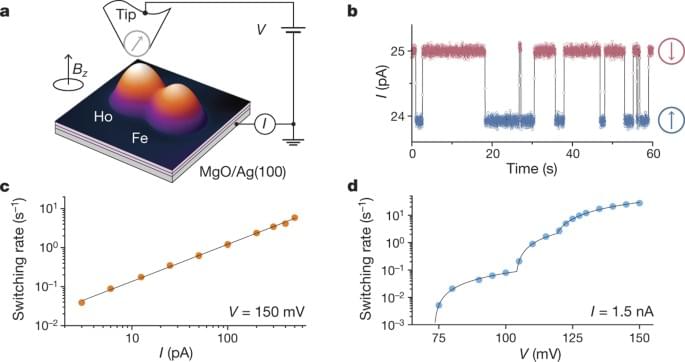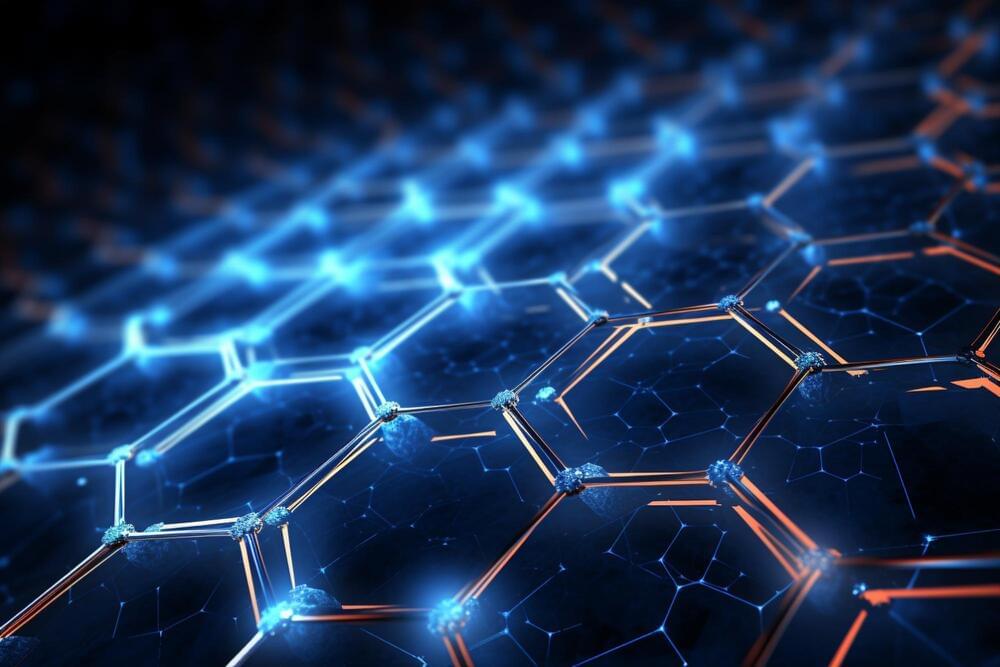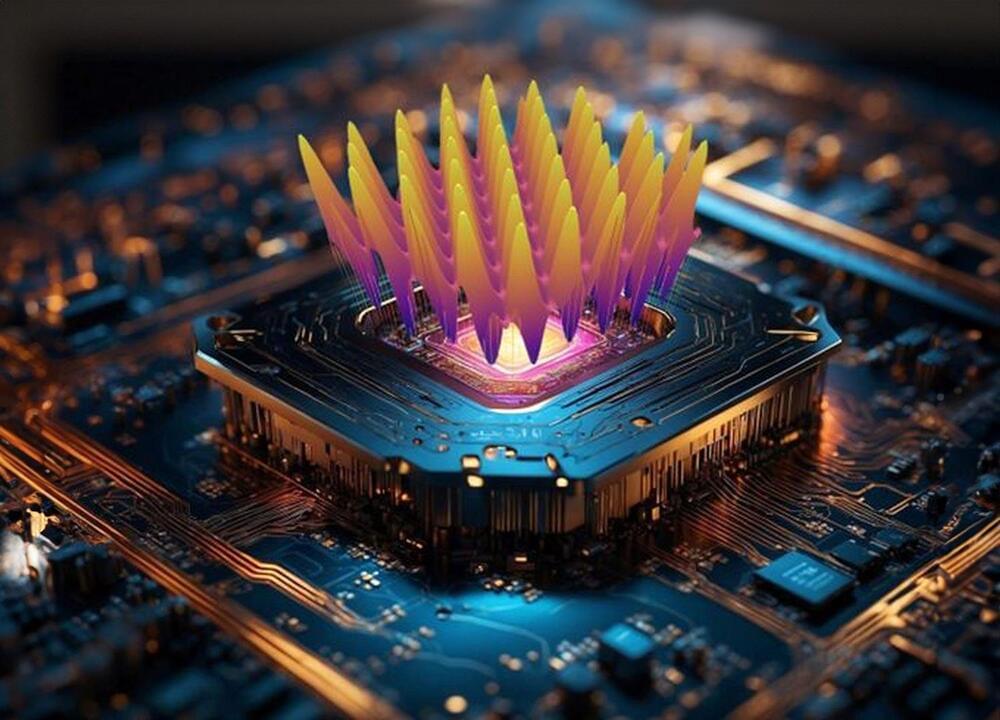Year 2017 face_with_colon_three
A two-bit magnetic memory is demonstrated, based on the magnetic states of individual holmium atoms, which are read and written in a scanning tunnelling microscope set-up and are stable over many hours.


A research team led by Academician Du Jiangfeng and Professor Rong Xing from the University of Science and Technology of China (USTC), part of the Chinese Academy of Sciences (CAS), in collaboration with Professor Jiao Man from Zhejiang University, has used solid-state spin quantum sensors to examine exotic spin-spin-velocity-dependent interactions (SSIVDs) at short force ranges. Their study reports new experimental findings concerning interactions between electron spins and has been published in Physical Review Letters.
The Standard Model is a very successful theoretical framework in particle physics, describing fundamental particles and four basic interactions. However, the Standard Model still cannot explain some important observational facts in current cosmology, such as dark matter and dark energy.
Some theories suggest that new particles can act as propagators, transmitting new interactions between Standard Model particles. At present, there is a lack of experimental research on new interactions related to velocity between spins, especially in the relatively small range of force distance, where experimental verification is almost non-existent.

Graphene, composed of layers of carbon atoms arranged in a honeycomb pattern, is recognized as a supermaterial due to its exceptional conductivity and mechanical advantages. These properties are key to advancing flexible electronics, innovative batteries, and composite materials for aerospace applications. Despite these benefits, creating elastic and durable films has been difficult. In a recent edition of Angewandte Chemie, researchers have proposed a solution by connecting graphene nanolayers through extendable bridging structures, potentially overcoming previous limitations.
The special capabilities of microscopic graphene nanolayers often drop off when the layers are assembled into foils, because they are only held together by relatively weak interactions—primarily hydrogen bonds. Approaches that attempt to improve the mechanical properties of graphene foils by introducing stronger interactions have only been partially successful, leaving particular room for improvement in the stretchability and toughness of the materials.

Scientists have utilized a quantum annealer to simulate quantum materials effectively, marking a crucial development in applying quantum computing in material science and enhancing quantum memory device performance.
Physicists have long been pursuing the idea of simulating quantum particles with a computer that is itself made up of quantum particles. This is exactly what scientists at Forschungszentrum Jülich have done together with colleagues from Slovenia. They used a quantum annealer to model a real-life quantum material and showed that the quantum annealer can directly mirror the microscopic interactions of electrons in the material. The result is a significant advancement in the field, showcasing the practical applicability of quantum computing in solving complex material science problems. Furthermore, the researchers discovered factors that can improve the durability and energy efficiency of quantum memory devices.
Richard Feynman’s Legacy in Quantum Computing.


Nice!
Researchers at UC Berkeley have enhanced the precision of gravity experiments using an atom interferometer combined with an optical lattice, significantly extending the time atoms can be held in free fall. Despite not yet finding deviations from Newton’s gravity, these advancements could potentially reveal new quantum aspects of gravity and test theories about exotic particles like chameleons or symmetrons.
Twenty-six years ago physicists discovered dark energy — a mysterious force pushing the universe apart at an ever-increasing rate. Ever since, scientists have been searching for a new and exotic particle causing the expansion.
Pushing the boundaries of this search, University of California, Berkeley physicists have now built the most precise experiment yet to look for minor deviations from the accepted theory of gravity that could be evidence for such a particle, which theorists have dubbed a chameleon or symmetron.

When ultrafast electrons are deflected, they emit light—synchrotron radiation. This is used in so-called storage rings in which magnets force the particles onto a closed path. This light is longitudinally incoherent and consists of a broad spectrum of wavelengths.
Its high brilliance makes it an excellent tool for materials research. Monochromators can be used to pick out individual wavelengths from the spectrum, but this reduces the radiant power by many orders of magnitude to values of a few watts only.
But what if a storage ring were instead to deliver monochromatic, coherent light with outputs of several kilowatts, analogous to a high-power laser? Physicist Alexander Chao and his doctoral student Daniel Ratner found an answer to this challenge in 2010: if the electron bunches orbiting in a storage ring become shorter than the wavelength of the light they emit, the emitted radiation becomes coherent and therefore millions of times more powerful.

Advanced materials, including two-dimensional or atomically thin materials just a few atoms thick, are essential for the future of microelectronics technology. Now a team at Los Alamos National Laboratory has developed a way to directly measure such materials’ thermal expansion coefficient, the rate at which the material expands as it heats. That insight can help address heat-related performance issues of materials incorporated into microelectronics, such as computer chips.
The research has been published in ACS Nano (“Direct measurement of the thermal expansion coefficient of epitaxial WSe 2 by four-dimensional scanning transmission electron microscopy”).
“It’s well understood that heating a material usually results in expansion of the atoms arranged in the material’s structure,” said Theresa Kucinski, scientist with the Nuclear Materials Science Group at Los Alamos. “But things get weird when the material is only one to a few atoms thick.”

Berkeley researchers have developed an ultra-precise instrument that captures atoms in free fall to search for dark energy, the force accelerating the universe’s expansion.
Experiment captures atoms in free fall to look for gravitational anomalies caused by universe’s missing energy

With this measurement, the Large Hadron Collider again demonstrated its ability to provide very high-precision measurements and bring new insights into an old mystery.
The CMS collaboration revealed a groundbreaking measurement of the electroweak mixing angle, confirming Standard Model predictions and addressing previous discrepancies with the most precise collider-based measurement to date. This achievement highlights the potential for precision physics in hadron colliders and prepares for more advanced studies at the High-Luminosity LHC.
Electroweak Mixing Measurement